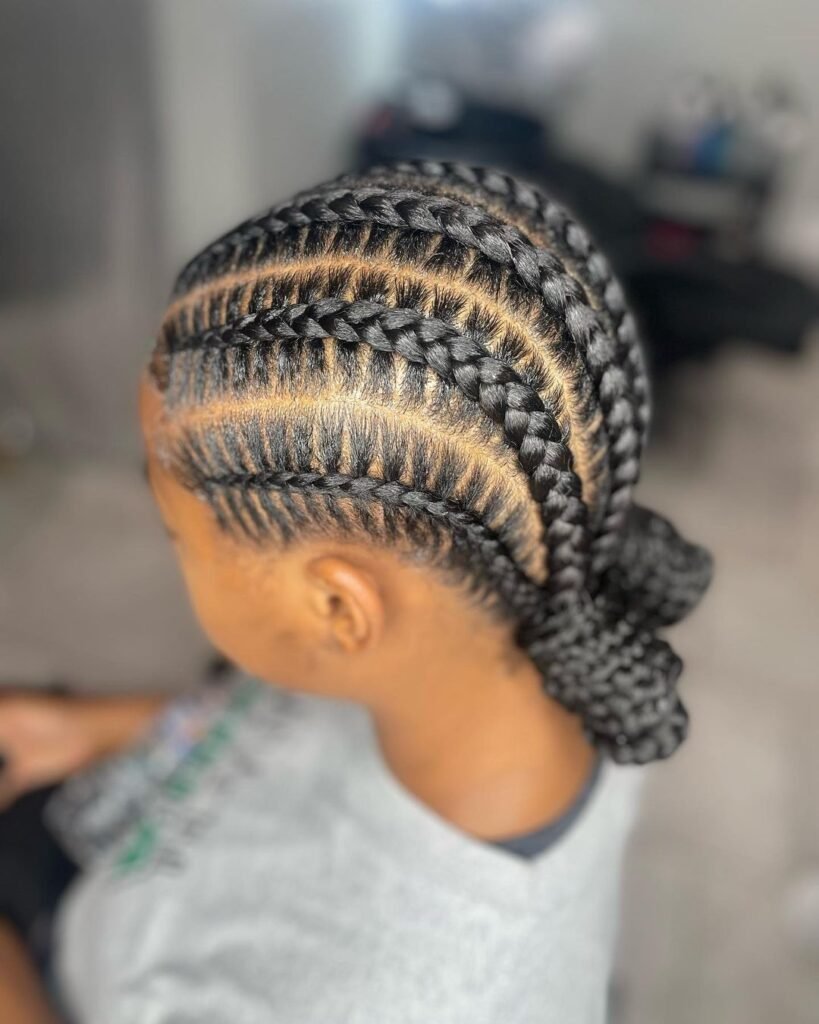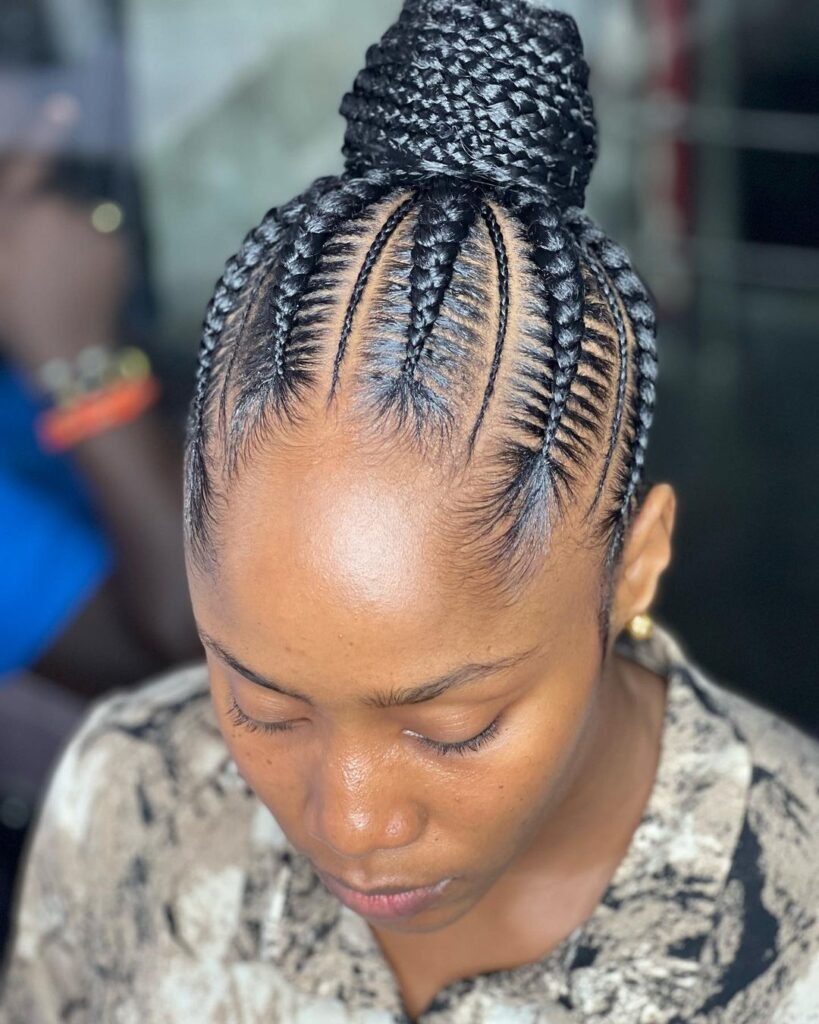Braid Hairstyles
DIY Stitch Braids: A Guide for Beginners
If you are a hairstylist or a do-it-yourselfer, stitch braids are unquestionably a style at the top of the list. A protective style is one that controls the hair from external elements like weather and excessive physical manipulation that could harm the hair.
Would you like to try stitch braids? Continue to read! A feed-in technique is used for stitch braids, where you braid while continuously adding hair extensions to your hair. To create stitch braids, divide your natural hair into horizontal rows of the desired widths, and then braid it into cornrows with extensions.
Stitch Braids: Preparatory Process

Stitch braids can be created once your hair extensions are ready and your hair has just been washed and cleaned. Start by washing your hair with a moisturizing shampoo, which is better for the health of your hair because it often contains fewer and milder surfactants than regular shampoo.
Then you use a conditioner after that! Never skip this step because the conditioner keeps hair moisturized, prevents split ends, and minimizes frizz by neutralizing the negative charges left behind by shampooing. Use a wide-tooth comb or your fingers to gently untangle the knots in your hair by sectioning it off and working your way up and outward.
Rinse the conditioned hair thoroughly before applying your leave-in conditioner and other hair care products using the LOC or LCO method, which denotes how to apply leave-in conditioners, creams, or oils, respectively. Then you may either straighten your hair or let it air dry.
Stretching your hair would improve the appearance of the braid, but it is not strictly necessary; you can make do with what you have with a little help from hair gel, jam, and edge control.
How to Make Stitch Braids

The finger or comb method and the rubber band method are the two procedures used to create stitch braids.
The finger method or the comb approach, which requires using either both to form the stitches, should be done to first part your hair into sections. After sectioning, take a small section of the front and divide it into three.
Begin braiding by tucking the strands underneath one another. Then, using your pinkie, add a small amount of hair from the sides by sliding it straight in the middle between the thumb and pointer, making sure they are all on the same line on both sides.
For a satisfactory outcome, you should be quite familiar with the basic functioning procedure before you start feeding in the hair extensions. The procedure of adding braiding hair extensions is simple; after shifting the hair pieces to the left side, you just take smaller sections of hair and drape the extension over your palm, holding it in place with your pinkie while you continue to braid.
For beginners, the rubber band technique is especially simple to use. First, divide your hair into halves, then into smaller sections of your choice.
Take a section of hair and divide it into smaller, horizontal parts that you can then divide into halves. Apply gel to each individual hair section for hold and sleekness, and then secure with a rubber band on both of the horizontal halves of the individual parts.
Holding the left and right sides of the segment’s first horizontal part, you may now begin braiding by sporadically adding hair extensions as you work your way down the section toward the nape of your neck. Split the hair into three sections, stack the pieces on top of one another, and secure it with a rubber band.
How Long Does Stitch Braids Last?
This depends on several variables, including how well you maintain your stitch braids, the texture of your hair, and whether it was done correctly. Additionally, the style. The typical lifespan of stitch braids is four to eight weeks.
How to Care for Stitch Braids

A protective hairstyle would lose its purpose if the natural hair that is supposed to be safeguarded isn’t, which occurs when the stitch braids aren’t taken care of. It is crucial to take care of your braids, and here are some suggestions:
- Cleaning the scalp is the most important braid care advice since a clean, healthy scalp guarantees healthy hair. By stroking your scalp with a ball of cotton or a clean cloth dipped in shampoo, you can reduce frizz. Old toothbrushes can also be used; simply use them in the same way as the others previously stated.
- After giving your scalp a good rinse with a cloth or cotton ball, proceed as usual with a conditioner. Apply the conditioner in the same way you would shampoo.
- Allow your hair to completely dry before adding moisturizers, such as light oils, and massaging them into your scalp to promote blood flow and hair growth. A leave-in conditioner keeps your hair moisturized all day.
- Go to bed with a silk scarf or satin bonnet, this would help to preserve the style, and keep frizz at bay due to its silky texture it provides a smooth glide that allows for the retaining of nighttime care and treatments. As opposed to cotton bedding which absorbs moisture from the hair due to it’s rough texture that grabs and pulls on the hair strands, especially from tossing and turning at night.
To maintain the health of the hair, washing the stitch braids as recommended is necessary. A braid spray would provide additional shine and longevity, while the aforementioned technique would help keep frizz to a minimum. If you plan to use braids for more than four weeks, it is usually advisable to wash them after two weeks.
What Quantities of Extension Packs Are Required?
The length of thread braids you desire and the thickness/fullness of your natural hair both play a role in this. Two and a half jumbo packets of hair extensions are required if you want your braids to be longer – that is either getting to the waist or butt. And, using one jumbo pack and a standard pack of hair extensions will give you shorter braids.


